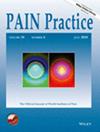射频治疗慢性腰骶部和颈椎疼痛:采用兰德/加州大学洛杉矶分校适当性方法的共识研究结果
IF 2.5
3区 医学
Q2 ANESTHESIOLOGY
引用次数: 0
摘要
背景尽管射频(RF)已被常规用于治疗腰骶部和颈椎区域的慢性疼痛,但最合适的患者选择标准仍存在不确定性。本研究旨在根据相关患者的特征制定射频的适宜性标准,考虑射频消融(RFA)用于治疗慢性轴性疼痛和脉冲射频(PRF)用于治疗慢性根性疼痛。方法采用兰德/加州大学洛杉矶分校适宜性方法(RUAM)来探讨欧洲多学科专家小组对射频消融(RFA)和脉冲射频(PRF)在各种临床情况下的适宜性的意见。结果对于腰骶部或颈部的轴性疼痛,RFA的适宜性取决于主要的疼痛诱因和触诊触痛的位置,如果这些变量提示面关节或骶髂关节疼痛的诊断,则适宜性得分较高。尽管对腰骶部和颈椎根性疼痛是否适合进行 PRF 的意见相当不一致,但大家一致认为,PRF 是经过精心挑选的腰椎间盘突出或椎间孔狭窄引起的根性疼痛患者的适当选择,尤其是在没有运动障碍的情况下。专家小组的研究成果被嵌入到一个电子健康教育工具中,该工具还涵盖了慢性疼痛的社会心理方面,为适当使用(P)射频干预治疗腰骶部和颈部慢性轴性和根性疼痛提供了综合建议。结论欧洲多学科专家小组制定了针对特定患者的建议,这些建议可支持对腰骶部和颈部慢性轴性和根性疼痛患者进行(预)选择,使其接受RFA或PRF治疗(可通过https://rftool.org)。未来的研究应验证这些建议,确定其对(P)射频干预结果的预测价值。本文章由计算机程序翻译,如有差异,请以英文原文为准。
Radiofrequency for chronic lumbosacral and cervical pain: Results of a consensus study using the RAND/UCLA appropriateness method
BackgroundDespite the routine use of radiofrequency (RF) for the treatment of chronic pain in the lumbosacral and cervical region, there remains uncertainty on the most appropriate patient selection criteria. This study aimed to develop appropriateness criteria for RF in relation to relevant patient characteristics, considering RF ablation (RFA) for the treatment of chronic axial pain and pulsed RF (PRF) for the treatment of chronic radicular pain.MethodsThe RAND/UCLA Appropriateness Method (RUAM) was used to explore the opinions of a multidisciplinary European panel on the appropriateness of RFA and PRF for a variety of clinical scenarios. Depending on the type of pain (axial or radicular), the expert panel rated the appropriateness of RFA and PRF for a total of 219 clinical scenarios.ResultsFor axial pain in the lumbosacral or cervical region, appropriateness of RFA was determined by the dominant pain trigger and location of tenderness on palpation with higher appropriateness scores if these variables were suggestive of the diagnosis of facet or sacroiliac joint pain. Although the opinions on the appropriateness of PRF for lumbosacral and cervical radicular pain were fairly dispersed, there was agreement that PRF is an appropriate option for well‐selected patients with radicular pain due to herniated disc or foraminal stenosis, particularly in the absence of motor deficits. The panel outcomes were embedded in an educational e‐health tool that also covers the psychosocial aspects of chronic pain, providing integrated recommendations on the appropriate use of (P)RF interventions for the treatment of chronic axial and radicular pain in the lumbosacral and cervical region.ConclusionsA multidisciplinary European expert panel established patient‐specific recommendations that may support the (pre)selection of patients with chronic axial and radicular pain in the lumbosacral and cervical region for either RFA or PRF (accessible via https://rftool.org ). Future studies should validate these recommendations by determining their predictive value for the outcomes of (P)RF interventions.
求助全文
通过发布文献求助,成功后即可免费获取论文全文。
去求助
来源期刊

Pain Practice
ANESTHESIOLOGY-CLINICAL NEUROLOGY
CiteScore
5.60
自引率
3.80%
发文量
92
审稿时长
6-12 weeks
期刊介绍:
Pain Practice, the official journal of the World Institute of Pain, publishes international multidisciplinary articles on pain and analgesia that provide its readership with up-to-date research, evaluation methods, and techniques for pain management. Special sections including the Consultant’s Corner, Images in Pain Practice, Case Studies from Mayo, Tutorials, and the Evidence-Based Medicine combine to give pain researchers, pain clinicians and pain fellows in training a systematic approach to continuing education in pain medicine. Prior to publication, all articles and reviews undergo peer review by at least two experts in the field.
 求助内容:
求助内容: 应助结果提醒方式:
应助结果提醒方式:


